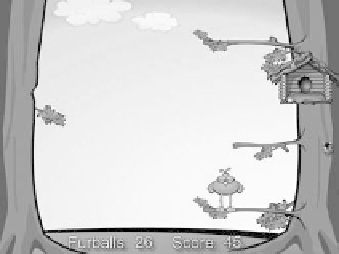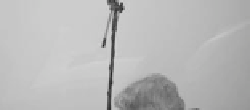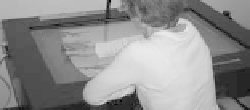Biomedical Engineering Reference
In-Depth Information
(a)
(b)
Figure 10.3
Virtual environment (b) by means of motion capturing system (a). For color
reference, see page 219.
Research into the ability of stroke survivors to transfer movements learned in
a virtual environment to the real world, shows that motor tasks in most cases are
transferred, and in some cases even generalized to other untrained tasks. In the
studies that compared motor learning in real versus virtual environments, some
advantage for VR training has been found (Holden 2005).
For the application of VR in rehabilitation therapy, different systems can
be used, such as head mounted displays and motion capturing systems (see
Figure 10.3
)
. In the last system, movement of the arm is recorded by a camera and
projected in the virtual environment on a screen. Stroke rehabilitation by means of
motion capturing seems to be a promising therapy.
In a training study by Prange (2009b), patients performed goal-directed reach-
ing movements within a virtual environment. In this virtual environment patients
had to chase away birds froma tree branch by reaching for the birdwith their hand,
see
Figure 10.3
. The additional augmented visual feedback provided was a score
on a screen, indicating the amount of chased away birds (knowledge of results).
After six weeks of this training stroke patients improved on the Fugl-Meyer scale
(on average 3.3 points) and increased their maximal reach distance (3.6% of arm
length) (Prange 2009b).
Providing augmented visual feedback seems to be a promising tool for arm
rehabilitation therapy for stroke survivors. However, more insight in the way
(nature, timing, frequency) of providing augmented visual feedback is necessary.
10.6 FUTURE RESEARCH
Current robot-aided therapy focuses mainly on the proximal arm. To maxi-
mize independent use of the arm, not only proximal arm function is important,
also functional use of the wrist and hand is essential.
Information about the




















